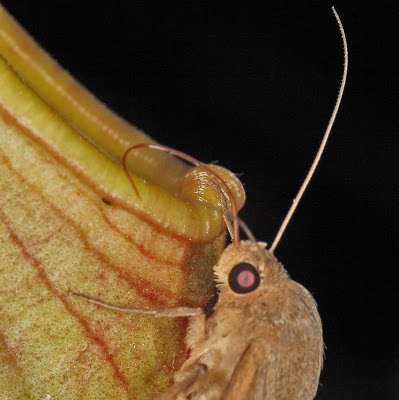The aims are:
National Moth Week’s main goal is to promote moths, and more generally, biodiversity, by encouraging interested parties to organize events at their local park, environmental education center, university, or homes. You can help us to reach this goal by registering an event today!
So you can register from anyplace in the world. Check out the blog. There are lots of supporters and sponsors. So get with it.
Be sure to check out Buck Richardson's Tropical Moth Identification Website or help in identifying northern Australia moths. Also see the CSIRO Moth site for help in identifying moths from all over Australia.
And if you are looking for a new hobby, why not take up moth collecting, or mothing, as they call it. It is now a fact that Alzheimer's Disease can be avoided by keeping your brain engaged! Moth collection and identification will certainly keep your brain busy. Google "Entomological Supplies" for information on how to get started making a collection.
Here are a few recent discoveries from the Far North.
The Singing Moth, Syntonarcha minoralis, announcing National Moth Week
Asota heliconia: Aganaidae
Asota heliconia; Aganaidae. This species is quite variable
Bracca rotundata: Geometridae; Ennominae
Bracca rotundata: Geometridae; Ennominae
Craspedosis leucosticta; Geometridae; Ennominae
Anisozyga fascinans; Geometridae; Geometrinae- a male. This species is sexually dimorphic
Chalcyope alcyona; Noctuidae; Catocalinae feeding on grass seed.
Cascera muscosa; Notodontidae; Notodontinae
Palpita unionalis; Crambidae; Pyraustinae
Parotis sp.; Crambidae; Pyraustinae
Glyphodes actorionalis; Crambidae; Pyraustinae
Cryptophasa irrorata; Xyloryctidae; Xyloryctinae
A widespread species of the family Cosmopterygidae
An odd oecophorid of which there are many in Australia
Macrobathra sp.; Cosmopterygidae
Crocanthes characotis; Lecithoceridae



































+on+S+daisy+5637.jpg)





















